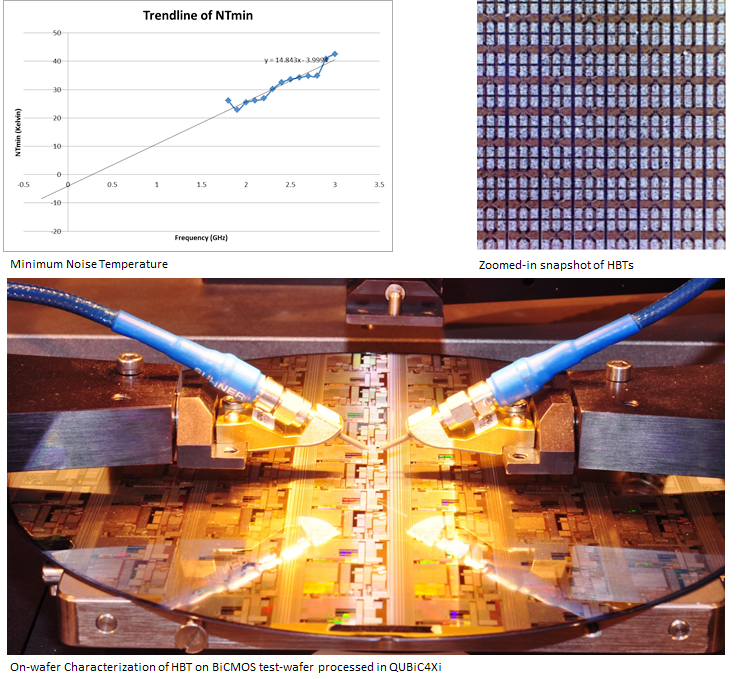Daily Image
13-03-2013On-wafer Noise characterization of SiGe QUBiC4XI process of NXP Semiconductors
| Submitter: | Saswata Bhaumik |
| Description: | Silicon Germanium (SiGe) transistor technology has progressed rapidly in past decade, in terms of high level integration, low power consumption, high yield, process maturity and high volume roll-out. This makes it a very attractive option for RF applications. Traditionally, radio astronomy has utilized cryogenically cooled ultra-low-noise receivers, designed with state-of-the-art in semiconductor technologies like InP and GaAs pHEMT and mHEMT. But the advent of next-generation radio phased array telescopes like SKA has implied a change in both approach and strategy of receiver architecture design. The primary aspect of this step-change is the combination of the high production quality of the RF industry with the high receiver performance of traditional radio astronomy instrumentation. This makes research on capabilities of SiGe processes (both cryogenically cooled LNA and integrated front-end) attractive to radio astronomy institutes like ASTRON. At ASTRON, transistors of the QUBiC4XI process of NXP Semiconductors (Dutch Silicon Company) have been evaluated. The foci of the evaluation process were on DC, small signal and noise temperature performances of devices. The values of current gain β (>1500) and unity current gain frequency fT (>180GHz) are much higher compared to those of last generation (β ~ 600 and and fT ~ 110GHz), which implies lower noise-temperature and higher available gain. At 2GHz, the minimum noise figure is less than 25 Kelvin at room temperature. The measurements on the 8-inch SiGe wafer were performed in the MMIC and EMC laboratories at ASTRON. On-wafer small-signal and noise characterizations were carried out with state-of-the-art electronic tuners and PNA-X. The measurements show that SiGe HBTs of QuBiC4Xi process NXP Semiconductors have high performance at room temperature. They may be used for the development of wide-band and low-noise receiver modules like small-signal amplifiers, analog beamformers, mixers and LNAs for SKA. |
| Copyright: | ASTRON |
| Tweet |  |
